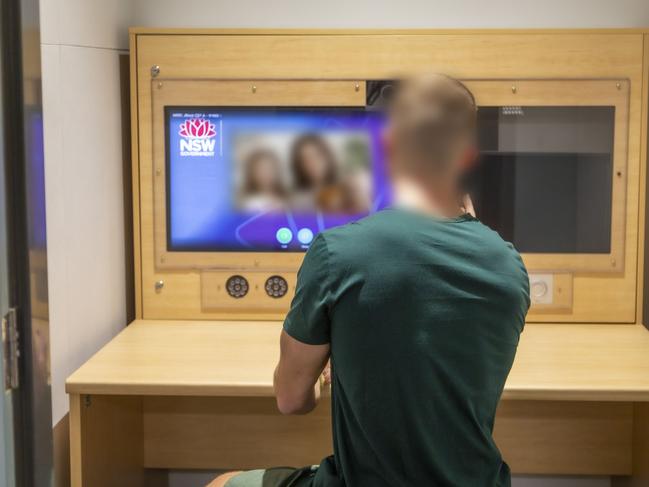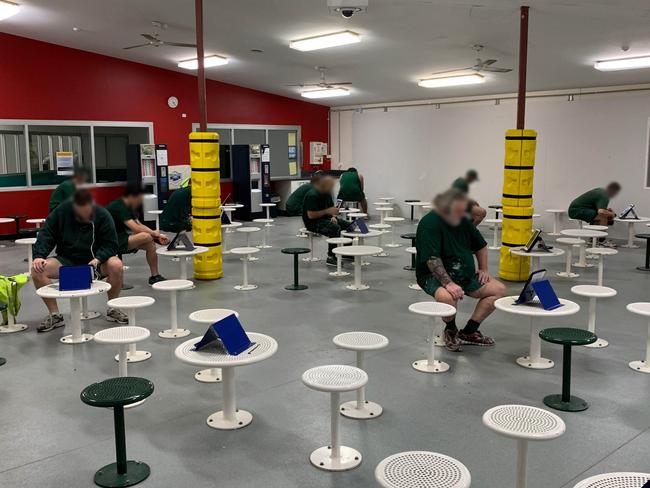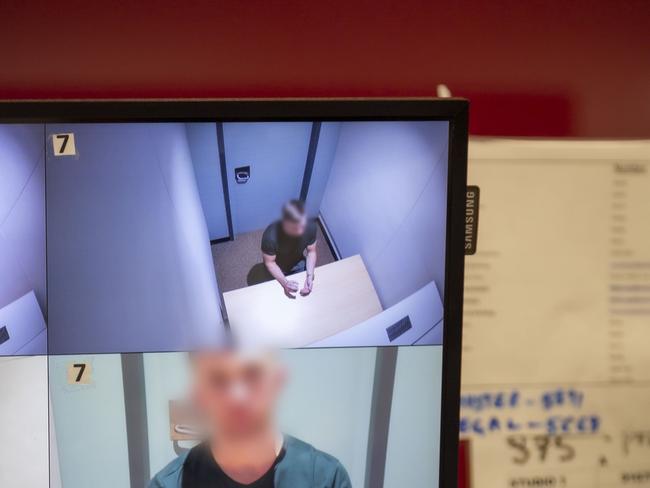No more visits, no more illicit drugs: New drug trial launched to combat strung out, rioting inmates
Prison officials have fast tracked trials of a new drug replacement therapy in a bid to ease tensions among inmates struggling with their addiction during coronavirus lockdown.
Crime in Focus
Don't miss out on the headlines from Crime in Focus. Followed categories will be added to My News.
- Aussie tourist stabbed in alleged nightclub rampage
- Aussie ice addicts face drug shortage and price hike
Exclusive: Prison officials have fast tracked trials of a new drug replacement therapy in a bid to ease tensions among inmates struggling with their addiction during coronavirus lockdown.
The suspension of contact visits during lockdown has cut off contraband sourced during prison visits and the decreased availability of illicit substances has resulted in escalating unrest.
Corrective Services NSW have confirmed injections of narcotic drug buprenorphine, known as “depot” are being administered to inmates suffering from opioid drug withdrawals, which can result in insomnia, nausea, headaches, anxiety, agitation and restlessness.
“Justice Health and Forensic Mental Health Network has been trialling a buprenorphine injection, known as a depot, for inmates to help manage cravings associated with drug withdrawals,” said a Corrective Services NSW spokeswoman.
“This trial has been fast-tracked to all prisons since the loss of supply of illicit drugs as a result of visit suspensions.

“Previously, inmates were provided an under the tongue treatment in the form of a film, which was required daily. The new method releases the buprenorphine into the body more slowly, helping them feel more stable. Additionally, inmates cannot pressure other inmates for their dosage.”
NSW is understood to be the only state participating in the trial, with other states closely monitoring the trial’s success.
Drug cravings and social distancing measures are believed to be behind recent riots at Goulburn Supermax, Cessnock and Wellington correctional centres in NSW, the Arthur Gorrie, Borallon and Maryborough correctional centres in QLD, a major disturbance at Darwin Correctional Centre, NT, and an incident at Victoria’s Barwon prison in which two inmates scaled the roof in protest of visit restrictions.
Queensland Health confirmed it was working in collaboration with corrective services to introduce an Opioid Substitution Treatment (OST) program in phases across Queensland prisons. At present, Phase One of the OST program is in place in six (five public and one private) correctional centres across the state, with 166 active participants being treated with medications such as methadone for dependencies on heroin, morphine, codeine, oxycodone and fentanyl.

“We are aware that some of this tension is related to the decreased availability of illicit substances, and we are ramping up our drug and alcohol programs to help address this. We always work hard to prevent the introduction of contraband into our centres, and our officers are well aware that present circumstances mean that other avenues may be tried to get contraband into centres at this time,” said a spokesman from Queensland Corrective Services.
South Australian prisons have also implemented “brief intervention services” including support phone calls for drug and alcohol issues as well as engaging non-Government organisation to provide counselling.
To further ease tensions, facilities around the nation have scrambled to deliver video conferencing programs to grants virtual face-to-face contact between inmates and their families, with NSW facilitating more than 23,500 since April 11.
“We are very close to matching the number of weekly face-to-face visits with video calls,” said Corrective Services NSW Commissioner Peter Severin.

Victoria claims an average of 600 video calls per day, and Qld is currently in the rollout process. Video facilities are also well established in South Australia.
“The number of virtual visits has remained steady since its introduction. Virtual visits have received positive feedback from prisoners. One example includes a prisoner being able to ‘see’ their dog again,” said a spokesman from South Australia’s Department of Correctional Services.
“Currently, there is no time frame on when in-person visits might return. They will return when it is safe to do so. No decision has been made yet on whether virtual visits will continue in conjunction with in-person visits.”
In NSW, prison officials are currently reviewing procedures for how contact visits can be reinstated once restrictions lift without allowing an influx of illicit drugs and other contraband. The advent of mobile phones, which are smaller and contain minimal metal-components, has made them easier to hide internally and harder to detect with existing technologies.

“CSNSW is looking to expand its X-ray technology to put an end to the inmate practice of internally secreting and smuggling items into prisons,” said a department spokeswoman.
Adopting technology currently used at John Morony Correctional Centre near Windsor since late 2018, non-medical X-ray scanners will be used to screen inmates after each visit.
“The non-medical X-ray scanner will first detect then generate an image of a contraband item concealed in a body cavity or under clothing, reducing the need to conduct strip searches and providing conclusive evidence of contraband.
Internally secreting items in body cavities has become an effective method for inmates to not only smuggle in contraband but to move it around the centre,” said a spokeswoman
Originally published as No more visits, no more illicit drugs: New drug trial launched to combat strung out, rioting inmates
